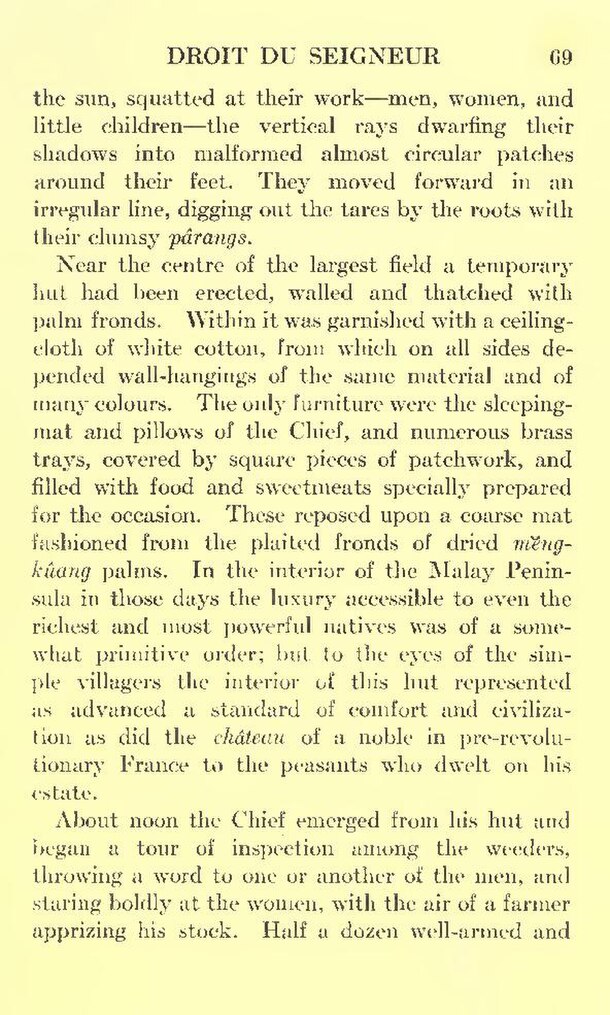the sun, squatted at their work—men, women, and little children—the vertical rays dwarfing their shadows into malformed almost circular patches around their feet. They moved forward in an irregular line, digging out the tares by the roots with their clumsy pârangs.
Near the centre of the largest field a temporary hut had been erected, walled and thatched with palm fronds. Within it was garnished with a ceiling-cloth of white cotton, from which on all sides depended wall-hangings of the same material and of many colours. The only furniture were the sleeping-mat and pillows of the Chief, and numerous brass trays, covered by square pieces of patchwork, and filled with food and sweetmeats specially prepared for the occasion. These reposed upon a coarse mat fashioned from the plaited fronds of dried mĕngkûang palms. In the interior of the Malay Peninsula in those days the luxury accessible to even the richest and most powerful natives was of a somewhat primitive order; but to the eyes of the simple villagers the interior of this hut represented as advanced a standard of comfort and civilization as did the château of a noble in pre-revolutionary France to the peasants who dwelt on his estate.
About noon the Chief emerged from his hut and began a tour of inspection among the weeders, throwing a word to one or another of the men, and staring boldly at the women, with the air of a farmer apprizing his stock. Half a dozen well-armed and
